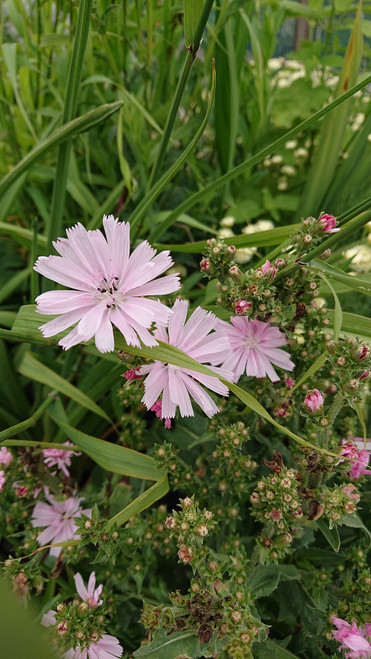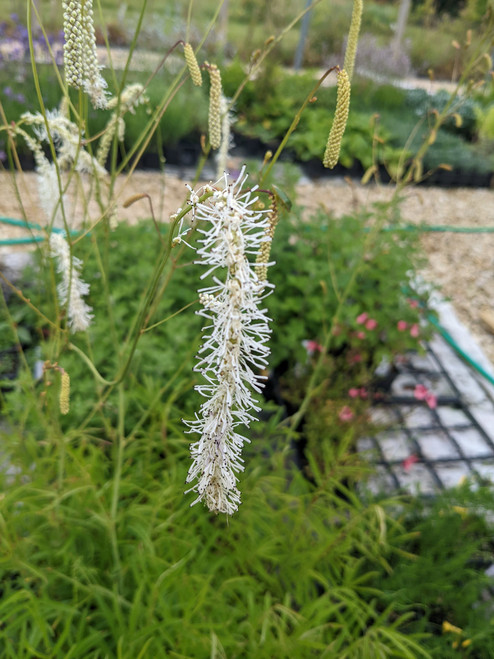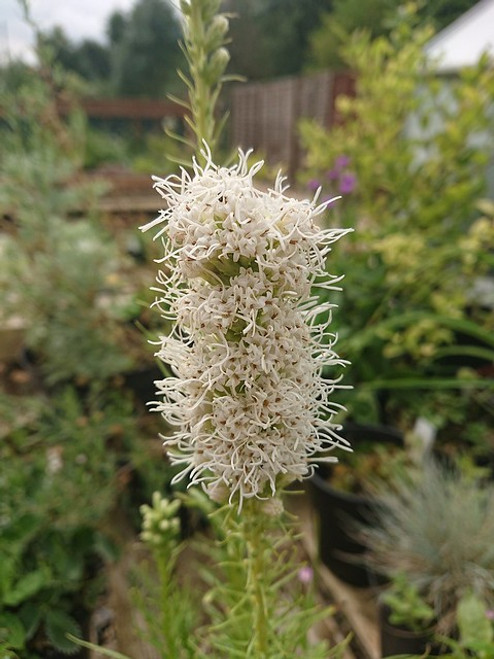Plant Overview
White chicory is less common than the blue and makes a beautiful border or herb bed plant. The flowers are pure white and often semi-double. It likes well drained soils (sand and chalk).
The leaves can be eaten as salad leaves. The dried and ground roots have been used as a coffee substitute and also to give a bitter taste to coffee.
Height: 1.2m
Myth and Legend
The origin of Chicory is described in a German folk tale. A young woman sat down at the side of a road to weep for her dead lover. None could console her, and so great was her grief that she resolved never to stop weeping unless she was turned into a flower. She was transformed into the wegwort, the chicory.
If prepared correctly, the chicory is said to be able to render the bearer invisible whenever they wish. Sadly the correct way to prepare it elludes us!
Chicory is one of the bitter herbs of the Jewish Passover and is generally considered to be a symbol of the good fortune that is to follow.
In the UK the flowers open around 7am and close again at noon.
On upland slopes the shepherds mark
The hour, when as the dial true,
Cichorium to the towering Lark,
Lifts her soft eyes, serenely blue. (From The Horolodge Of The Fields, 1749)
Common name(s): White Chicory; White daisy; White dandelion; White sailors; White weed; Bunk; Coffeeweed; Cornflower; Hendibeh; Horseweed; Ragged sailors; Succory; Wild bachelor's buttons; Wild endive.











